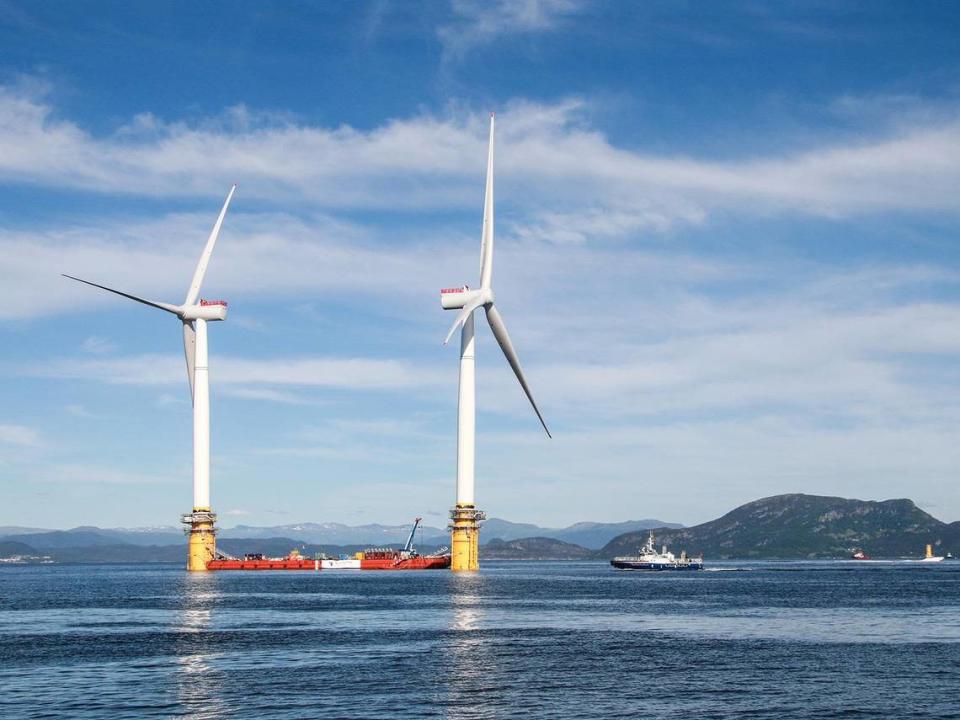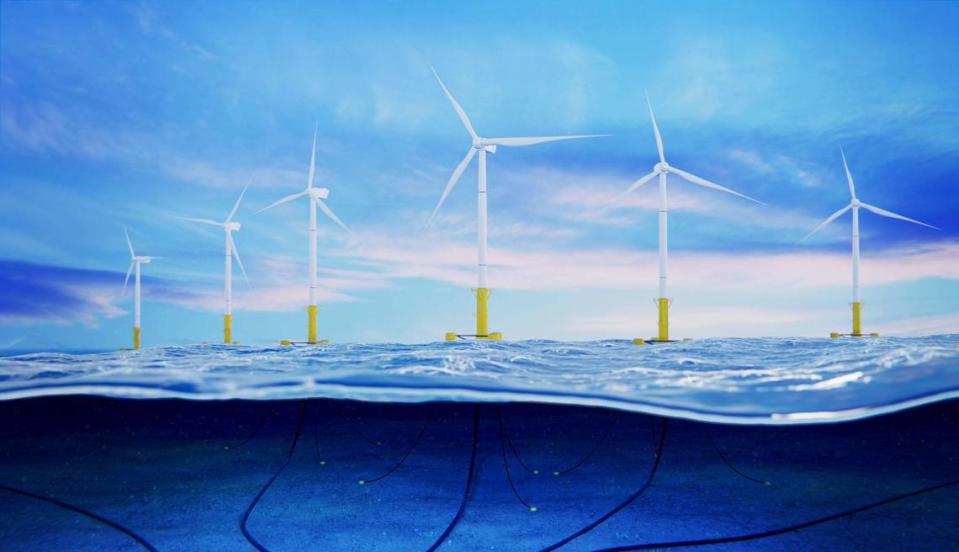PNNL scientists are working to advance the future of offshore floating wind farms
If you have watched the Tri-Cities’ forceful springtime winds toss everything from tumbleweeds to trampolines, you have seen the power that could be harnessed as a clean energy source.
While land-based wind farms already generate about 10 percent of our country’s electricity, plans to meet national clean energy goals include capturing the potential of the stronger, more consistent winds that blow over the oceans. And for the West Coast, advancing floating offshore wind farms is critical because most water in the Pacific is too deep to affix turbines to the ocean floor.

One benefit of deploying floating turbines far from shore is they create fewer sight and sound impacts for stakeholders, which enables greater flexibility in designing turbine heights and blade lengths. However, floating offshore wind technologies are still maturing and more expensive than their counterparts built on the seabed.
Researchers at the Department of Energy’s Pacific Northwest National Laboratory are helping to address the challenges of floating wind farms, including faster deployment and mitigation of environmental impacts.
Their efforts are part of a national initiative to tap the potential for floating offshore wind to generate 2.8 terawatts of carbon-free electricity — more than the U.S. consumes annually — to help meet growing demand from homes, data centers, factories and the electrification of the transportation and building sectors.
For example, scientists are using two PNNL-managed research buoys to collect atmospheric and oceanographic measurements that can improve wind forecasts at turbine heights. In studies off the California and Hawaii coasts, the buoys’ lidar systems and remote sensors captured data that is now publicly available.

These data can help improve the ability to accurately predict where, when and how much power can be produced. This information can help inform investment decisions, as well as help utilities plan their day-to-day balance of wind with other generation sources such as hydropower and solar.
PNNL supported efforts to incorporate more granular regional weather data like this into models for predicting output from land-based wind farms, saving utilities and their customers millions of dollars.
PNNL also leads a DOE Office of Science Energy Earthshot Research Center that brings together national laboratories and academia.
This collaboration will examine meteorological and oceanic conditions, how those conditions might change in the future and how power generated from floating turbines can be integrated into the grid. The project will use scientific machine learning tools to model the floating offshore wind energy system in current and future climates — all in the quest to bring down costs.
Harnessing wind energy is one thing but getting it from the sea to where it is needed is another. Researchers are reimagining how to design a future grid to optimize the value of this resource.

A study of the West Coast suggests the best transmission model requires creating a “backbone” that could deliver wind energy up and down the West Coast rather than depending on the congested lines along the I-5 corridor. Results like these will help inform researchers and aid policymakers’ planning and decision-making.
Other research focuses on the unique environmental impacts presented by floating installations. Unlike turbines attached to foundations built into the sea floor, these turbines sit on floating platforms that are tethered by cables to one another and to anchors hundreds of feet below.
PNNL engineers are studying how humpback whales might encounter these cables to understand potential risks. They also are working on a sensor to detect when debris gets caught in cables to avoid the possibility of entangling marine life.
Floating offshore wind, especially for the West Coast, is one of many approaches needed to decarbonize our energy system and combat climate change. At PNNL, we are dedicated to research and development that addresses the associated challenges, maximizes the benefits and informs decisions for moving this attractive option forward.
Steve Ashby is the director of the Pacific Northwest National Laboratory.

